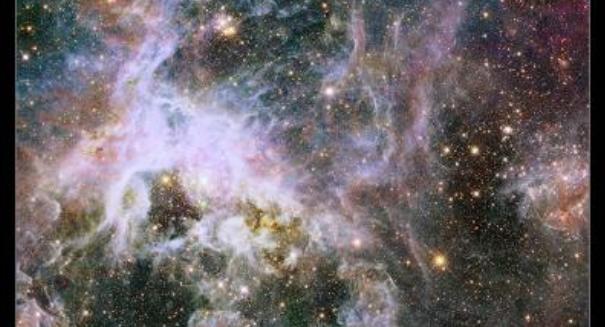
Astronomers are creating a large catalog of stellar properties, which will allow them to study a wide range of major topics associated with star formation.
According to a news release from NASA’s Goddard Space Flight Center, the Hubble Space Telescope has probed the interior of the Tarantula Nebula and uncovered a gleaming treasure trove of more than 800,000 stars and protostars embedded inside the nebula.
Via the Hubble Tarantula Treasury Program, astronomers are creating a large catalog of stellar properties, which will allow them to study a wide range of major topics associated with star formation. The results from this program are published in the Astronomical Journal.
This stunning near-infrared view reveals newly formed stars that are frequently embedded in clouds of dust, and only the near-infrared light can pierce through these clouds.
This particular nebula is a wild region of star birth that sits 170,000 light-years away in the Large Magellanic Cloud, a small, satellite galaxy of the Milky Way.
Astronomers consider the Tarantula Nebula a superb laboratory for observing a frenzy of star formation because the nebula contains the closest observable super-cluster of stars. Star formation of this intensity, according to astronomers, was much more common in the early universe. Hubble has the ability to resolve individual stars and many red protostars, as well red giants and supergiants.
The spectacular mosaic is the result of more than 400 individual photos. Given the mosaic’s detail and sheer breadth, astronomers can watch how episodes of star birth progress across the region in space and time.
Star development in the Tarantula Nebula began tens of millions of years ago, though it wasn’t limited to a specific region. Rather, as enough gas collected, areas of star birth came to life helter-skelter.
Astronomers posit that the nebula’s active star birth may be fueled partly by gas ripped from the Small Magellanic Cloud.
With the help of the Hubble mosaic and other resources, astronomers are determined to figure out whether supermassive stars always develop in cluster, or whether they can be born in
One question researchers hope to answer is whether supermassive stars always form in clusters, or whether they can be born in solitude.
Leave a Reply